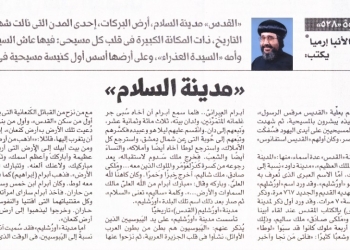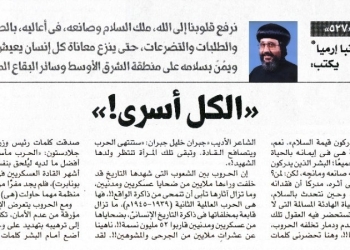As we turn through the pages of history from the earliest civilizations in the world, we find the Ancient Egyptian leaving his imprints on the footsteps of the world, towards light and civilization, his footsteps advancing ahead of other peoples surrounding him in all walks of life.
As Dr. Gamal Hemdan puts it, Egypt remains “a unique geographical rarity” in its river’s environs, its desert environment, and it’s the first nation to consider endorsing and enhancing its trade through digging an artificial canal to be used in this arena, as it is in travels.
Egyptian man-made canals over the course of history
History’s walls bear engravings testifying that Egypt is the first nation to connect the Mediterranean sea to the Red Sea, when it dug across its lands a man-made canal, utilizing the River Nile and its branches. Egypt’s Pharaohs were well aware of the significance of Egypt’s locale in the center of the world, overlooking both of these crucial Seas, offering the world – as per Egypt’s custom – all that is novel.
Channel of Senusret III [1874 B.C.E.]
Senusret III is considered one of the most famous of Egypt’s Twelfth Dynasty’s kings, historians mentioning that he is known for his courage and longsighted vision in ruling Egypt. He lent trade great attention, which is why he thought of connecting the Mediterranean Sea and the Red Sea, via digging a canal East of the Delta, between the Suez Gulf and the River Nile, calling it “Sesostris”. Ships would set sail from the Mediterranean Sea to reach Bubastis [currently the city of Zagazig], through the Pelousey branch of the River Nile, then head East to the Bitter Lakes, through Tikehau [currently Abu Sueir/Sweir in Ismaileya], then to the Red Sea. This canal impacted trade movements in Egypt.
Canal of Seti I [1310 B.C.E.]
With the establishing of the Ninth Dynasty at the hands of Ramses I, and the throne reaching his son Seti the first, who is not merely considered one of the most prominent kings of that dynasty, but also one of the greatest kings to rule Egypt; he managed to spread security, peace and prosperity in Egypt, also digging a canal between the River Nile and the Red Sea. Similarly, he was concerned with construction and building, erecting obelisks, however, historians disagree upon re-digging the canal in his era after it had piled up over time.
Canal of Nekau II [610 B.C.E.]
As for the canal of the era of Nekau II, one of the kings of the 26th Dynasty, he tried to burrow a canal to the Arotri Sea [currently Suez Gulf and Red Sea], when ships would take four days to cross it, and it was wide enough for two ships to pass through side by side with their oars. Around 120,000 laborers perished during the burrowing operation. Some historians mentioned that Herodotus wrote of this: “Born to Psammetichus was Napkus [Nekau] who ruled Egypt, the first to legislate burrowing a canal to lead to the Arotri Sea [Red Sea]. In the year 610 before Christ, during the era of Pharaoh Nekau II, the canal was filled with dust, due to lack of maintenance for a lengthy period of time. A dam of dirt was formed, acting as a barrier between the Red Sea and the Bitter Lakes, so Nekau II dedicated his efforts to re-burrowing the canal.”
However, Nekau II halted the work, due to a prophecy of a soothsayer, as Herodotus continues: “Yet, he called off executing this task, which had commenced, of joining the Red Sea to the Bitter lakes due to the soothsayer Millet, a priestess of the “Heliopolis temple”, who recorded in her prophecy the following: “I can see into the future that your work will bring harm upon Egypt, for the burrowing of the canal will profit strangers rather than kin, and foreigners rather than patriots. Today you are receiving a toll for the passage of people through your land, as well as cargo and convoys. Today you control people’s and goods’ destiny, however, tomorrow all people will pass through the canal, which will attract everyone including enemies’ greed, so you will lose control of the canal and will have let peril through to the core of the country. By the gods, and due to the homelands rights of you, issue your orders [to halt the works] and burrowing.” “
Canal of Dara / Darius I [522 B.C.E.]
Sea travel transportations heightened between Persia and Egypt during the Persian occupation, lending great significance to re-digging the canal, which connected the Red Sea to the River Nile, and with the advent of Persian King Dari / Darius I to power in Egypt, he tried to re-navigate the canal by linking the Nile to the Bitter Lakes, then linking these in turn to the Red Sea. So the Persian king gave orders to continue the burrowing commenced by Nekau II, following his own ambitious improvements to the original plan. Herodotus mentioned that the canal was wide enough for two ships to travel side by side with their oars spread, on a trip lasting four days to cross the canal.
Alexander the Great [332 – 331 B.C.E.]
Alexander the Great paid high attention to Egypt following its conquest, placing the canal project at the forefront of his concerns, in order to manage moving his navy ships from the ports of the Mediterranean Sea to the Red Sea, as well as starting to execute the north canal project. However, his sudden death stood between him and completion of the two projects.
Canal of Ptolomy II [285 B.C.E.]
When Egypt came under Ptolomite rule, Ptolomy II, dubbed “Philadelph” expressed concern for completing the canal, extending it from the River Nile to the city of Arsenau [currently Suez]. Yet, neglect reached the canal, which was piled up, until the time of Roman rule in Egypt.
Canal of the Roman Emperor Trajan [117 C.E.]
Roman Emperor Trajan restored navigation through the canal, creating a new branch for the Nile, going from the area of Babylon [currently Fum Al-Khaleej in Cairo], to reach the area of Abbassa, in the Al-Sharqeya province. Moreover, he connected this new branch to the old one extending to the Bitter Lakes. Navigation and ship passage continued for around three centuries, till it was exposed to neglect and was no longer suitable for navigation and ship passage.
Canal of the Emir of Al-Mu’mineen [Believers] [690 C.E.]
In the 7th century of the Christian era, with the Islamic conquest of Egypt at the hands of Amr Ibn Al-Aas, during the era of Caliph Omar Ibn Al-Khattab, the canal was restored and repaired from Fustat to Al-Qalzam [currently Suez], and it was dubbed “Canal of the Emir of Believers”. Some historians state that leader Amr Ibn Al-Aas was primarily seeking to link the two Seas together directly, without resorting to the River Nile. However, Caliph Omar Ibn Al-Khattab rejected the idea, fearing for Egypt from the overflowing of Red Sea waters. So he was content with merely re-digging the old canal, to enable ships to travel to Yemen and India, and to connect Egypt to the Arabian Peninsula.
The canal continued to operate around one and a half centuries, till it was filled during the era of Abbasid Caliph Abi Jaafar Alm-Mansour, blocked from the Suez side, due to the revolution against Abbasid rule in Mecca and Medina, which led the Caliph to decide to block the arrival of any supplies from Egypt to the rebels. This in turn impacted the trade movement between India and the Eastern countries, shifting to movement across the desert via convoys, and the canal was sealed till 1820 C.E.
Discovery of the Ra’s Al-Rajaa’ Al-Saleh Route
In the late fifteenth century of the Christian era, the Ra’s Al-Rajaa’ Al-Saleh route was discovered; the first to call it “head” and give it its name was the Portuguese excavator Diaz. As for the name Ra’s Al-Rajaa’ Al-Saleh, it came from John II, King of Portugal, who wished to express his joy at the newly discovered sea pathway, which led to India away from land dangers to which convoys are usually exposed. Having discovered this path, Egypt was greatly affected, since merchant ships no longer passed through it, instead circumventing the African continent to reach India. With the British imperial rule of India, control and the upper hand over this route was reserved for Britain, which provoked the French into considering studies to strike British trade by digging the Suez Canal.
Suez Canal Excavation Studies
Attempts commenced to directly link the two Seas, Mediterranean and Red, but erroneous studies stating that the water levels of the Red Sea are higher than those of the Mediterranean led to the failure of those attempts. The first such study started in 1799, in the time of French Emperor Napoleon Bonaparte, during the French Campaign in Egypt, when French engineer Charles Loper took the helm of researching the matter by forming a committee to study the project and find out the possibilities of digging this canal between the two Seas. However, the report issued by this committee mentioned that the level of sea water of the Red Sea is ten meters higher than that of the Mediterranean. The report added that the soil and residue of the Nile will block the entry of the canal. Based on this study, the idea of digging the canal was rejected and halted, since it was claimed that digging the canal would lead to the Delta’s flooding.
Then the idea was rekindled a second time in 1833 C.E., during the rule of Mohammed Ali, when a group of French scientists called “Saint Simonianists” came to Egypt. They were deeply interested in the Egyptian canal project, and… of spectacular Egypt words never end…!
His Grace Bishop Ermia [Jeremiah]
General Bishop
President of the Coptic Orthodox Cultural Center










